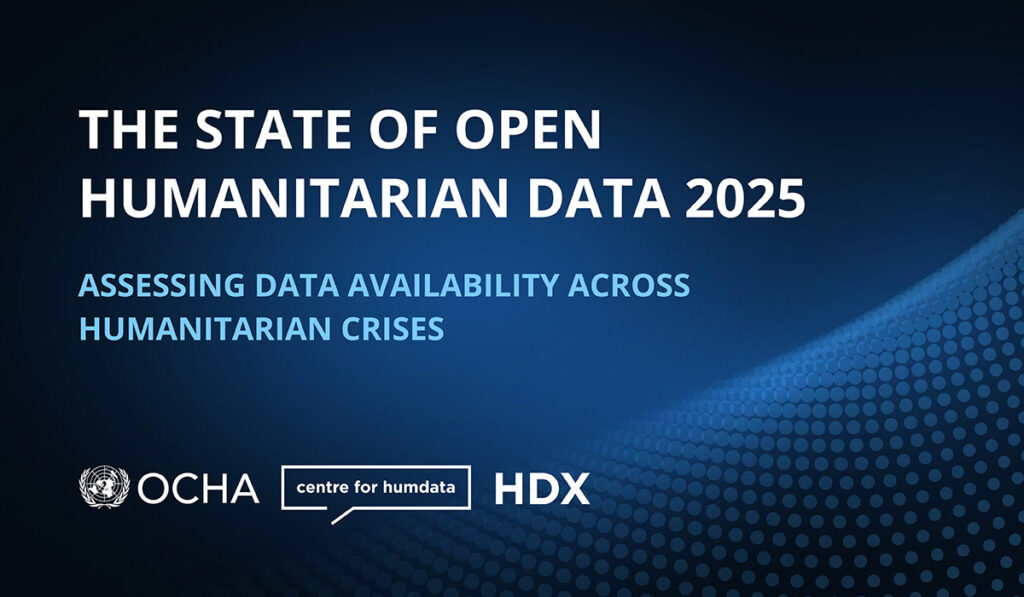Share
This is our sixth year of producing The State of Open Humanitarian Data. Despite steady progress with data coverage over this time, funding shortages in 2025 threaten to reverse these gains. As the humanitarian system severely contracts, the data ecosystem that supports it will experience the same pressure. The year ahead promises to be challenging for data availability.
Our insights into data availability and use come from managing the Humanitarian Data Exchange (HDX), an open platform for finding and sharing data across crises and organizations. At the start of 2025, we estimate that 74 percent of crisis data is available and up-to-date across 22 humanitarian operations, based on the analysis of the HDX Data Grids. A further 17 percent of data is available but not up-to-date, leaving 9 percent of the data unavailable.
The 22 Data Grids include 418 unique datasets, with a range of 15-24 per location. Datasets included in the Data Grids were downloaded six times more than the average dataset on HDX. The top Data Grid locations are Ethiopia, Nigeria and Yemen; baseline population, administrative divisions and conflict events are the most popular datasets across all Data Grids.
This year’s report contains details on the data available for each location, category and sub-category covered in the Data Grids as of 31 December 2024. In addition, we showcase the contribution of WorldPop and their innovative methods to enhance the accuracy of population estimates, especially in areas where traditional census data are outdated or unavailable. We provide examples of how climate data is being used to inform anticipatory action, with examples from Cameroon and Mozambique. We take a look at the increase in automated data sharing through APIs since HDX was created in 2014.
Given the expectation of severe funding shortages in 2025, we have included a brief analysis on what this may mean for the continued availability of data in the Data Grids. Data about ‘people and how a crisis is affecting them’ has the highest risk, based on our assessment framework. This includes data on acute malnutrition, food security, internally displaced people, returnees, and humanitarian needs. This data is central to humanitarian action and is relied upon by many actors for targeting their response efforts and for secondary analysis.
The HDX platform will continue to serve as an anchor in the humanitarian data ecosystem, making critical data easy to find and use for the analysis that informs decision making in humanitarian operations. We recognize the valuable and long-standing contributions of data-sharing organizations and welcome new actors to join the platform.
Visit the Overview of Data Grids page on HDX for the latest status on data availability across humanitarian operations throughout the year. Please be in touch with questions or comments at centrehumdata@un.org.
